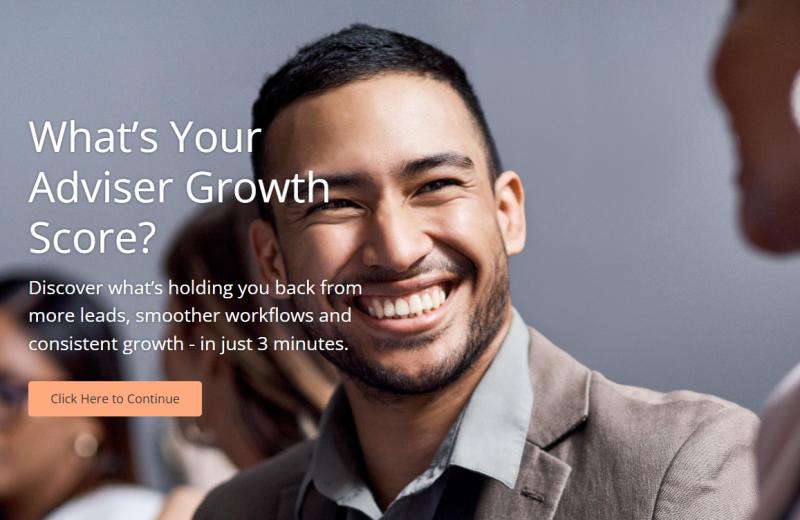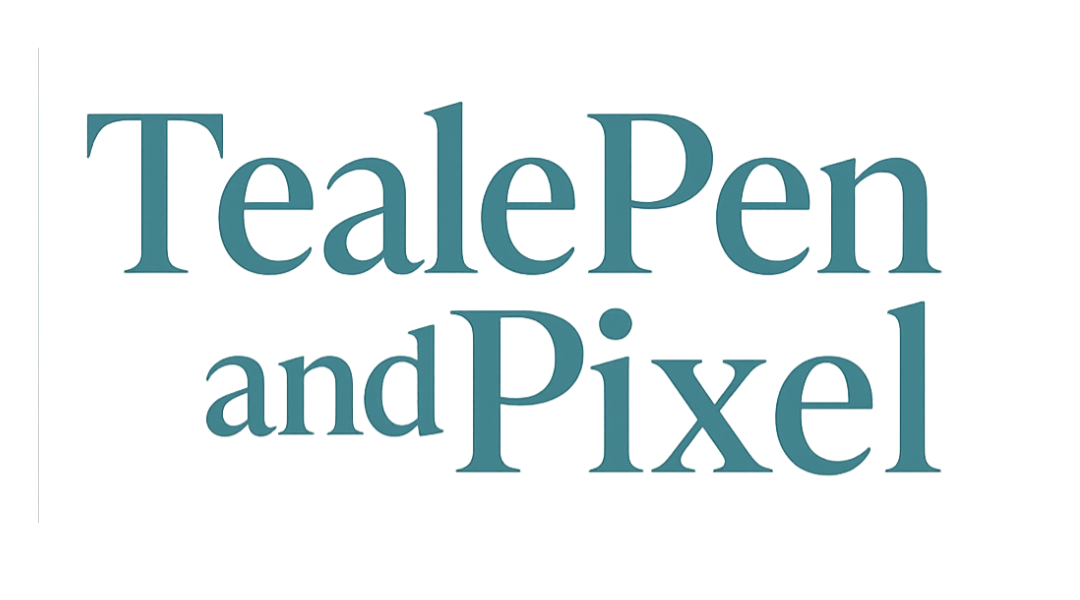Key Takeaways
Artificial intelligence (AI) is changing almost every sector in 2025, including financial services. One of the most powerful areas of innovation is financial advisor AI, where it is cutting costs, reducing admin and increasing scalability.
I’ve worked with advisors for 10 years, and I have never seen so much opportunity before.
Until now, a good margin benchmark for advisors has been 35-40%. As an “AI financial advisor”, however, there is potential to grow that to 60-70%.
One advisor I spoke to said he had a “Reasonably small book of around 210 client groups”, and with current processes he would “max out” at around 310.
However, as an AI-powered financial advisor, he said there’s “no reason” why he couldn’t double that.
Below, I’ll share some of the key ways artificial intelligence is making this all possible. Here is a snapshot of what lies ahead:
- Financial advisors are moving through two AI phases in 2025 – from Dabbling to Deployment. We’re moving from just using AI notetakers for meeting transcriptions, to embedded AI ecosystems that streamline and scale advisory processes.
- AI will almost certainly not replace advisors. However, the financial sector is poised for enormous transformation. As Helen Wardle puts it: “AI will do to financial services what the internet has done to retail”. Staying stationary is not an option.
- Predictive analytics and anomaly detection are helping advisors anticipate market risks and client behaviours – turning scattered data into forward-looking, actionable insight.
- Portfolio monitoring and compliance are being automated behind the scenes, with AI flagging risks, logging audit trails and keeping you ahead of regulatory shifts.
- Client onboarding, lead enrichment and document review are being streamlined by smart assistants – freeing up capacity and improving client turnaround times.
- Client-facing tools like chatbots and scheduling assistants are helping to scale service delivery – without sacrificing the personal touch.
- Ethical use of AI is front and centre: advisors are vetting tools for transparency, consent and encryption, aligning tech use with regulatory and reputational standards.
- And finally, empathy remains your edge. AI is augmenting (not detracting from) the core strengths that define trusted advice: your judgment, intuition and relationships.
Ready to reimagine your practice? Dive into the full guide to see exactly how AI can enhance, not replace, your personal brand of advice.
The Rise of the AI-Powered Financial Advisor
Let’s clear up some definitions at the start.
When I talk about an AI financial advisor (or AI-powered financial advisor), I’m not referring to the “robo advisors” that have risen up recently (automated financial advice and portfolio management).
Rather, I’m referring to advisors who are increasingly integrating “generative AI” into their firms.
Rewind to the early 2000s – automation meant clunky spreadsheets and batch trading.
However, over the last few years, I’ve noticed a transformation in how financial advisors approach AI tools.
We are shifting across two broad phases, where advisors are moving from “Dabbling” to “Deployment” in their use of artificial intelligence.
For instance, in 2024, one study found that 25% of advisors were using AI to help with crafting client communications (e.g. email drafts) and summarising client notes.
We could call this “non-business-critical experimentation” with AI (mostly peripheral use cases).
However, a year later, now in 2025, I’m seeing a lot more Deployment – leading to the rise of the AI-powered financial advisor:
- Automated research and plan building for clients
- Portfolio management assistance
- Client onboarding
- Lead capture and enrichment
- Inbox organisation.
- Client life event monitoring
- Compliance checking
- Recruitment and candidate screening
And so much more. You’ve probably noticed it yourself. Manual notetaking, portfolio rebalancing and endless CRM updates are quietly being handed off to AI.
But here’s what matters: AI isn’t about replacing your expertise – it’s about boosting your impact and freeing up time for the work only you can do.
So, what’s changing right now?
- Clients are craving faster, smarter insights
- Regulators are watching more closely
- Digital-first competition is upping the bar for engagement, security and personalisation
This financial advisor AI guide unpacks exactly how today’s leading advisors are blending automation, analytics and empathy to future-proof both their client relationships and their bottom line.
You’ll discover:
- Where to implement AI that actually saves you hours each week (not just promise it)
- How automated workflows and smart assistants support – not replace – human advice
- Ways to navigate data security, compliance and ethical hurdles with confidence
Whether you’re AI-curious or knee-deep in workflow design, this is the start of a roadmap for creating a hybrid model that enhances your expertise – not sidelines it.
Financial Advisor AI Trends in 2025
Imagine software that helps you spot market anomalies before they hit, drafts personalised portfolio summaries in seconds, or even listens to your meetings and updates your CRM automatically.
That’s financial advisor AI: smart, supportive and designed to work at your side – not replace you.
It’s now possible to orchestrate a huge range of workflows, where client notes, scheduling and compliance checks handle themselves.
This helps you stay in control, but no longer drown in the admin.
Clearing the Air
Let’s address the elephant in the Zoom room: Will AI replace financial advisors?
The answer is becoming clear – AI is your co-pilot as a financial advisor, not your competitor. Advisors still own the trust, empathy and nuanced decision-making that algorithms just can’t imitate.
AI is incredibly powerful, but it has inherent limitations which give you a “moat” as a human advisor – for at least three reasons:
- LLMs (large language models) only work because they are trained on vast amounts of data. This allows ChatGPT and its rivals to offer generic financial advice, but it cannot do the full task for each client who is a “library” in and of themselves, with most of that data not disclosed to the model.
- Clients are still hesitant to trust AI completely with financial advice. AI trust 𝘃𝗮𝗿𝗶𝗲𝘀 𝗼𝗻 𝘁𝗵𝗲 𝘂𝘀𝗲 𝗰𝗮𝘀𝗲. For learning activities, 56% of users trust LLMs. Yet, for financial guidance, the figure drops to 32%.
- You, as a human advisor, have a heart, mind and memory. LLMs, despite their power, are still prone to forgetfulness and do not really “know” a client – which is what they want.
So, no – a completely robotic AI financial advisor is not on the cards anytime soon.
The Winds of Change
However, this does not mean you can ignore AI. Indeed, it is set to transform the financial advisory space. One fintech founder puts it nicely:
“AI will do to financial services what the internet has done to retail” – Helen Wardle, Money Means
Think about that retail transformation in the late 1990s for a moment. We went from local shops to global marketplaces; from in-person browsing to seamless e‑commerce.
AI could similarly transform financial services. Think AI-powered advisors, personalised customer interactions at scale, workflow automation etc.
We’re at a critical stage. The technology is changing rapidly, and leading advisors are recognising it – seizing the opportunities with both hands.
Those advisors who do little, or nothing, face getting left behind.
Core AI Applications in Financial Advisory Services
So, how are financial advisors using AI to grow beyond 35-40% margins in 2025?
Let’s start with the “Dabbling” use cases that blossomed in 2024.
Automation of Workflows and Note-taking
Until recently, financial advisors relied on hand-written notetaking in client meetings. Those notes were typically then typed up again on a computer, and manually sent to other staff via email.
Per client, this can add up to hours lost on admin. Today, however, AI notetakers like Otter.ai or Fireflies can transcribe meetings instantly.
That means no more scrambling for action items or searching through legal pads.
Moreover:
- Your cloud-based notes can automatically sync to your CRM and compliance system
- The AI can organise tasks, deadlines and follow-ups right as you talk
- Multi-step workflows are triggered – e.g. schedule a client, generate pre-meeting briefs, file compliance logs (all running seamlessly in the background)
Imagine reviewing client priorities from last quarter with a single click, while your competitors are still flipping through notebooks.
“AI lets you spend less time documenting, and more time actually connecting.”
Advanced Data Analytics and Market Insights
AI is very good at detecting trends and anomalies in large datasets that humans might miss.
For instance, anecdotally you may have seen “panicked” client activity when markets have been volatile – but AI can use machine learning to help forecast client behaviour based on real historical data.
It can also clean, merge and normalise data from multiple sources (e.g., CRM, financial platforms, economic feeds). This can then be integrated with scanned news, earnings calls, social media and research reports.
In my experience, financial advisors are not always the best at keeping track of competitor moves. Again, AI can help here too – using scrapers and summarisers can keep you informed about rivals’ decisions (e.g. SEO updates), product launches and media appearances.
“With AI, you don’t just watch markets—you anticipate them.”
Risk Management and Compliance Automation
Regulatory headaches? AI can monitor portfolios, help with fraud detection and flag compliance issues before they become fires.
- Real-time analytics spotlight anomalies or regulatory breaches as they happen
- NLP tools scan policy documents, contracts and filings for risks
- Automated logging keeps audit trails tight without manual chores
“AI’s keeping your practice five steps ahead of the rulebook.”
Client Engagement and AI-Enhanced Support
AI isn’t just behind the curtain. It’s front-of-house, too.
- Website chatbots can help answer FAQs and manage scheduling 24/7
- Virtual assistants triage support, escalating complex questions to you
- AI-generated reminders can help advisors nurture relationships at scale
Your clients increasingly expect immediacy. Smart advisors are using AI to meet that demand and set the bar, not scramble to catch up.
“Scale your personalised touch—even while you sleep.”
—
If you’re building your 2025 toolkit, start where AI delivers the most: automating routine, unlocking insight and keeping your client focus truly personal.
Think of AI as your tireless co-pilot – ready to handle the mundane, whilst you elevate your impact.
Navigating Key Challenges and Risks
Data Privacy and Security Concerns
Financial advisors are trusted with ultra-sensitive client data. Protecting this information isn’t optional; it’s mission-critical. A single breach can put both client wealth and your reputation on the line.
Key threats keep evolving, including:
- Cyberattacks targeting cloud-based AI systems
- Unauthorised access or misuse of AI-generated insights
- Accidental exposure from poorly secured third-party integrations
To stay ahead, leading firms should use:
- End-to-end encryption
- Explicit client consent and transparent data-use policies
- Secure storage with frequent audits and rapid-response protocols
Emerging standards – such as ISO 42001 and updated SEC guidelines – are setting the new bar for 2025.
“Data privacy isn’t a checkbox; it’s the foundation for digital trust.”
Ethical and Regulatory Uncertainty
AI regulations are changing at warp speed in the USA, UK, EU, Australia and other developed markets.
Advisors face a mosaic of rules that can be rewritten overnight.
Here are some of the biggest risks to navigate right now:
- Algorithmic bias skewing investment recommendations
- Opaque “black box” decisions – hard to explain, harder to justify
- Inconsistent disclosure about how AI impacts advice
You’ll want to:
- Insist on explainable AI from vendors. Know how the logic works
- Build in proactive audit trails
- Share clear, simple disclosures so clients understand where AI fits in
Transparency is your best strategy for building long-term client trust.
The Hybrid Model: The AI-Powered Financial Advisor
The Rise of Augmented Advice
Imagine having a digital partner that preps market insights while you prep for a client call.
Here’s another picture: an advisor uses AI-driven portfolio recommendations, then leverages their experience to coach clients through tough market swings.
“Trust grows when technology and empathy team up—clients want both, not just one.”
Building Trust and Client Confidence
Financial advisors do need to approach AI carefully. It has immense benefits that you need to communicate, but this should be done without setting off alarm bells.
Get ahead of potential objections by explaining exactly how decisions are made in your firm. Map out where AI begins and your judgment steps in.
Here’s what helps:
- Explain, in plain English, how AI distills data (“It flags market dips, I double-check your plan”)
- Offer transparency by letting clients see AI-generated reports and your added notes
- Openly tackle big questions like, “Is my money safe?” with simple, reassuring details
“Transparency isn’t a nice-to-have—it’s a must-have in the AI era.”
Actionable Steps to Build Your AI Toolkit
Ready to go hybrid? Start by asking:
- How does this tool use client data, and will it keep it safe?
- Does the platform support customisation for my unique workflows?
- Will I get responsive support as features evolve?
Vet vendors by checking:
- Security protocols (encryption, regular audits)
- Update schedule and support guarantees
- Peer reviews and compliance certifications
Create your first AI-powered workflow – start with meeting notes and automated follow-ups.
Snapshot:
- Beginner: Try AI-based scheduling and note-taking tools
- Intermediate: Integrate AI with CRM and risk analysis
- Advanced: Orchestrate multi-step planning and proactive alerts
“The right AI toolkit frees you for high-value, human conversations.”
Looking Ahead: Trends and Future-Proofing
AI regulations will likely tighten. Staying agile means tracking updates and documenting your AI use.
Encourage your team to experiment with new tools, then share wins, fails and lessons learned openly.
Don’t forget – investing in your own creativity and emotional intelligence remains your best hedge.
In 2025, the winning advisors are those who co-create value with AI, building relationships on trust and transparent collaboration.
The hybrid approach isn’t a compromise. It’s your competitive edge.
Conclusion
AI is no longer a trend – it’s becoming the backbone of future-ready financial advisors.
The firms setting the pace in 2025 aren’t just using smarter tools; they’re creating better client experiences and scaling their impact far beyond traditional limits.
Embracing AI doesn’t mean giving up your expertise. It means multiplying what makes your advice valuable – clarity, trust and personal connection – at a speed and scale competitors struggle to match.
—
Key Actions to Elevate Your Practice:
- Automate routine workflows (like meeting notes and scheduling) to instantly reclaim hours each week
- Leverage AI-powered analytics to surface actionable insights before your competitors spot them
- Prioritise transparent, client-first communication about how AI fits into your process
- Plug into ongoing training and peer communities to keep your skills sharp and your approach relevant
- Treat security as non-negotiable. Invest in vendors with robust privacy and compliance standards
—
Ready to move from curiosity to action? Try this:
- Audit your current workflows for tasks ripe for automation
- Pilot one small AI tool (such as an AI notetaker or chatbot) with a single client segment
- Invite your team to co-explore, sharing lessons learned and wins in your weekly meetings
- Commit to a quarterly review of your tech stack – evolve as new capabilities and risks emerge
—
The real win? Future-ready advisors don’t just keep up – they set the standard.
Step up, lean in, and let AI make your practice more human than ever.

Philip Teale is a MCIM marketer with over 10 years’ experience working with financial advisors – helping them gain new revenue and clients using online channels and AI-powered workflows.

